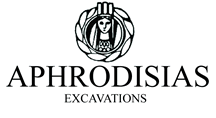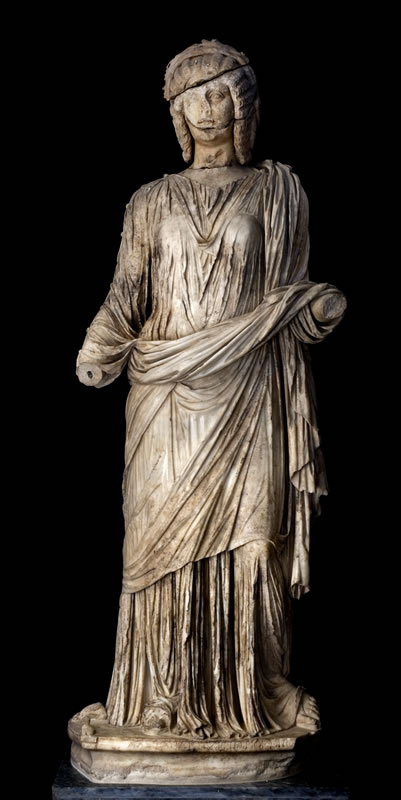History
High Imperial period: AD 100-300
Major construction continued in the city in the second century AD. This was the period of the most intense competitive building in the cities of Roman Asia. The hellenistic-style colonnaded townscape was equipped now with grand, more Roman-style monuments. In the religious sector, the entrance to the outer Sanctuary of Aphrodite was marked by the Tetrapylon, and the Temple itself was encased in a close-fitting colonnaded court or temenos. At the same time, the west end of the Urban Park was redesigned with a new stoa, behind which rose a massive bathing facility, the Hadrianic Baths. And in the mid-second century, the two-storeyed display facade called the Propylon of Diogenes was built to close the east end of the Urban Park. In the later second century, the elaborate, roofed Bouleuterion or Council House was built on the axis of the Agora, and another set of baths was constructed, southeast of the Theatre (Theatre Baths).
Grand marble building at Aphrodisias continued without interruption through the middle and later second century. This was the period of the Antonine emperors at Rome and of the greatest economic prosperity in the provinces. The public culture of benefaction and honours, of settled festival calendars, and of conspicuous marble buildings were at their height.
By c. AD 200 the city centre was fully built-up in monumental marble style, and there was little new construction in the third century. The inscriptions record vigorous, even intensified operation of the honorific process, now focused on the calendar of festivals and competitions. The first half of the third century was, according to the epigraphic record, a great age of new festival foundations and of honorific activity.
A powerful local impact was also felt in the third century from the empire-wide extension by the emperor Caracalla in AD 212 of Roman citizenship to all freeborn inhabitants of the empire who did not already have it (the Constitutio Antoniniana). The use of the emperor’s nomen Aurelius by the new citizens was widespread and shows that a large body of civic epigraphy and activity belongs to this period, the early and middle third century. Most notable is a sudden surge in the early third century in the production and use of marble sarcophagi: the new citizens enfranchised by Caracalla’s Edict seem to have been keen to participate in the elevating civic life represented by carved marble.






